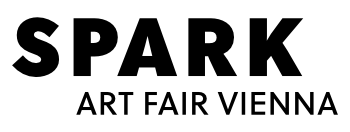NFT
The rise of NFTs over the last few months has shaken up the art world. While digital art has been around since the 70s, the blockchain's potential for art production was only introduced in 2014 with the creation of the first one-off NFT by Kevin McCoy and Anil Dash. It's been gaining momentum ever since. Encounters between the traditional art market and crypotart-market have now captured international attention as a new market – and we're exploring what this means for contemporary artists and galleries.
SPARK creates a special space within the “Interface” section, separate from the section's gallery booths with the following participating artists and galleries:
Niko Abramidis &NE – max goelitz (Munich, DE)
Dynamic Vision Equity NFT, 2021
Tilman Hornig - Zeller van Almsick (Vienna, AT)
GlassPhone (Stille Nacht Nr.7), 2020 (unique)
Oliver Laric – Galerie Johann Widauer (Innsbruck, AT)
Becoming Goat, 2021
Banz & Bowinkel – Kunst & Denker Contemporary (Dusseldorf, DE)
Current III 02, 2021
NFT
A non-fungible token (NFT) is a unit of data stored on a digital ledger, the blockchain, that certifies a digital asset to be unique and therefore not interchangeable. NFTs can be used to represent items such as photos, videos, audio, and other types of digital files. Access to any copy of the original file, however, is not restricted to the buyer of the NFT. While copies of these digital items are available for anyone to obtain, NFTs are tracked on blockchains to provide the owner with a proof of ownership that is separate from copyright. Non-fungible tokens are used wherever virtual goods can be collected and traded as unique objects.
IN COOPERATION WITH BLOCKCHAIN.ART (BCA)
BCA is a blockchain supported marketplace and ecommerce solution for galleries, museums and artists. Designed by art world professionals, for art world professionals, Blockchain.art (BCA) makes transacting digital artworks on the blockchain intuitive and sustainable.
